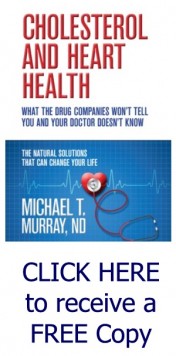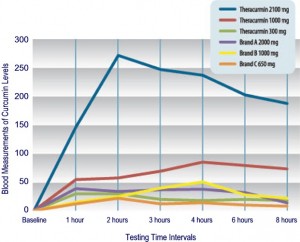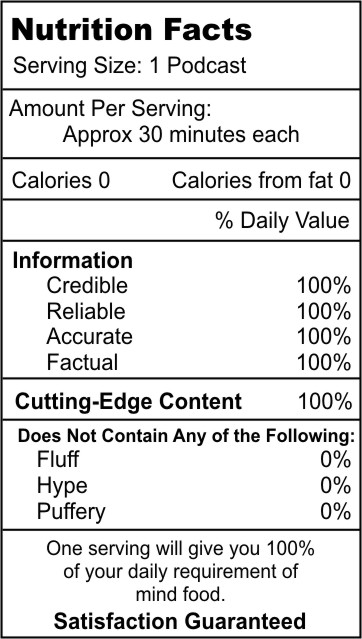Podcast: Play in new window | Download (Duration: 43:38 — 80.2MB)
Theracurmin is the Most Bioavailable Form of Curcumin
 Curcumin has become one of the world’s best selling herbal extracts. With good reason. The science of curcumin has revealed that curcumin has powerful health benefits. HOWEVER, curcumin is very difficult to absorb and that makes it very difficult to achieve therapeutic blood levels. There is ongoing research into how to increase the therapeutic effects of curcumin, by getting more into the blood stream. Dr. Murray will discuss some of the challenges with curcumin some of the exciting research into the benefits. He discusses Theracurmin, the most bio-available form of curcumin.
Curcumin has become one of the world’s best selling herbal extracts. With good reason. The science of curcumin has revealed that curcumin has powerful health benefits. HOWEVER, curcumin is very difficult to absorb and that makes it very difficult to achieve therapeutic blood levels. There is ongoing research into how to increase the therapeutic effects of curcumin, by getting more into the blood stream. Dr. Murray will discuss some of the challenges with curcumin some of the exciting research into the benefits. He discusses Theracurmin, the most bio-available form of curcumin.
Theracurmin is a special advanced form of curcumin—the yellow pigment of turmeric (Curcuma longa), the chief ingredient in curry. Curcumin has demonstrated significant activity in many experimental and clinical studies, but its effects have been limited until now because of poor absorption. Theracurmin is by far the most bioavailable form of curcumin and represents a major breakthrough in the use of curcumin to promote health. Many of curcumin’s beneficial effects are attributed to its antioxidant and anti-inflammatory effects.
Enhancing the Benefits of Curcumin (the following is excerpted from DoctorMurray.com. CLICK HERE to read more.
 “While many preliminary studies show curcumin has great promise, a major issue limiting its clinical use has been that it is not very well absorbed. Several types of curcumin products have now been developed to more effectively raise blood and tissue levels of curcumin. Theracurmin is by far the most advanced of these techniques. This all-natural preparation reduces the particle size of curcumin, while dramatically increasing its solubility. The average particle size of typical curcumin is 22.75 μm. In Theracurmin, the particle size has been reduced to 0.19 to 0.3 μm—a reduction of over 100 times. This reduced particle size curcumin is then mixed with natural emulsifiers to suspend it in a highly bioavailable mixture that is then dried. The result of all of this technology is a dramatic increase in the absorption of curcumin as compared to all other commercial forms that have been tested, including other enhanced forms of curcumin.
“While many preliminary studies show curcumin has great promise, a major issue limiting its clinical use has been that it is not very well absorbed. Several types of curcumin products have now been developed to more effectively raise blood and tissue levels of curcumin. Theracurmin is by far the most advanced of these techniques. This all-natural preparation reduces the particle size of curcumin, while dramatically increasing its solubility. The average particle size of typical curcumin is 22.75 μm. In Theracurmin, the particle size has been reduced to 0.19 to 0.3 μm—a reduction of over 100 times. This reduced particle size curcumin is then mixed with natural emulsifiers to suspend it in a highly bioavailable mixture that is then dried. The result of all of this technology is a dramatic increase in the absorption of curcumin as compared to all other commercial forms that have been tested, including other enhanced forms of curcumin.
 Health Benefits of Theracurmin
Health Benefits of Theracurmin
Because Theracurmin enhances the absorption of curcumin, all of the benefits associated with curcumin are also enhanced. Theracurmin has been the subject of several clinical studies that have shown Theracurmin possesses an ability to reduce tissue damage caused by inflammation, improve liver function, increase the ability of the heart to function more efficiently, and increase the flexibility of the arteries. Currently, Theracurmin is being investigated for additional properties at some of the major universities and research centers in the world. The dosage recommendation of Theracurmin, based upon the existing clinical evaluation, is 300 to 600 mg per day.
Theracurmin is the Most Bioavailable Form of Curcumin
The above graph demonstrates Theracurmin is by far the most bioavailable form of curcumin. Theracurmin is the only curcumin preparation currently available that produces a clear dose response. What that means is that even small dosages of Theracurmin increase blood measurements of curcumin, and, as the dosage increases, so does the blood level. This increase is linear, meaning that it increases in the blood in a parallel fashion to the dosage. This absorption profile is extremely important; as the effectiveness of curcumin within the body requires achieving effective concentrations. Theracurmin is able to achieve necessary concentrations within the body that are not likely to be easily achieved, if at all, with other curcumin preparations. ” (the above is excerpted from DoctorMurray.com. CLICK HERE to read more.












{ 2 comments… read them below or add one }
Some time ago I published an article in Nitric Oxide, showing that curcumin sequesters nitrogen dioxide, but not NO. Has anyone shown that curcumin is at all helpful in the treatment of hypertension? The rational for an effect would be the prevention of NO2 reacting with NO, thereby increasing the half-life of NO.
I am not aware of such research. I would be very interested if anyone has any knowledge to share.